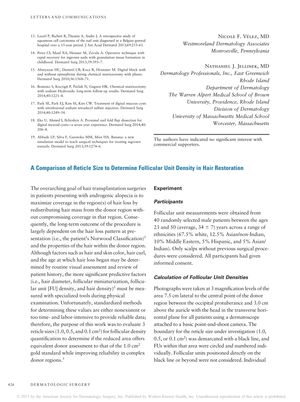A Comparison of Reticle Size to Determine Follicular Unit Density in Hair Restoration
February 2015
in “
Dermatologic Surgery
”

TLDR Smaller reticle sizes are as accurate as the standard size for measuring hair density in hair restoration.
The document reports on a study that aimed to determine if smaller reticle sizes could be used to measure follicular unit density (FUD) in hair restoration procedures as effectively as the 1.0 cm² gold standard. The study involved 40 male patients aged between 23 and 50 years, with no prior scalp surgeries, across various ethnicities. Follicular unit measurements were taken using three different reticle sizes (1.0, 0.5, and 0.1 cm²) and analyzed using repeated-measures analysis of variance. The results showed no significant differences in mean FUD across the different reticle sizes, and both high and low estimates of FUD were statistically similar for all reticle sizes. The study concluded that a 0.1 cm² reticle size is as accurate as the 1.0 cm² standard and recommended its use to simplify and expedite the FUD measurement process in hair restoration pre-operative assessments.






